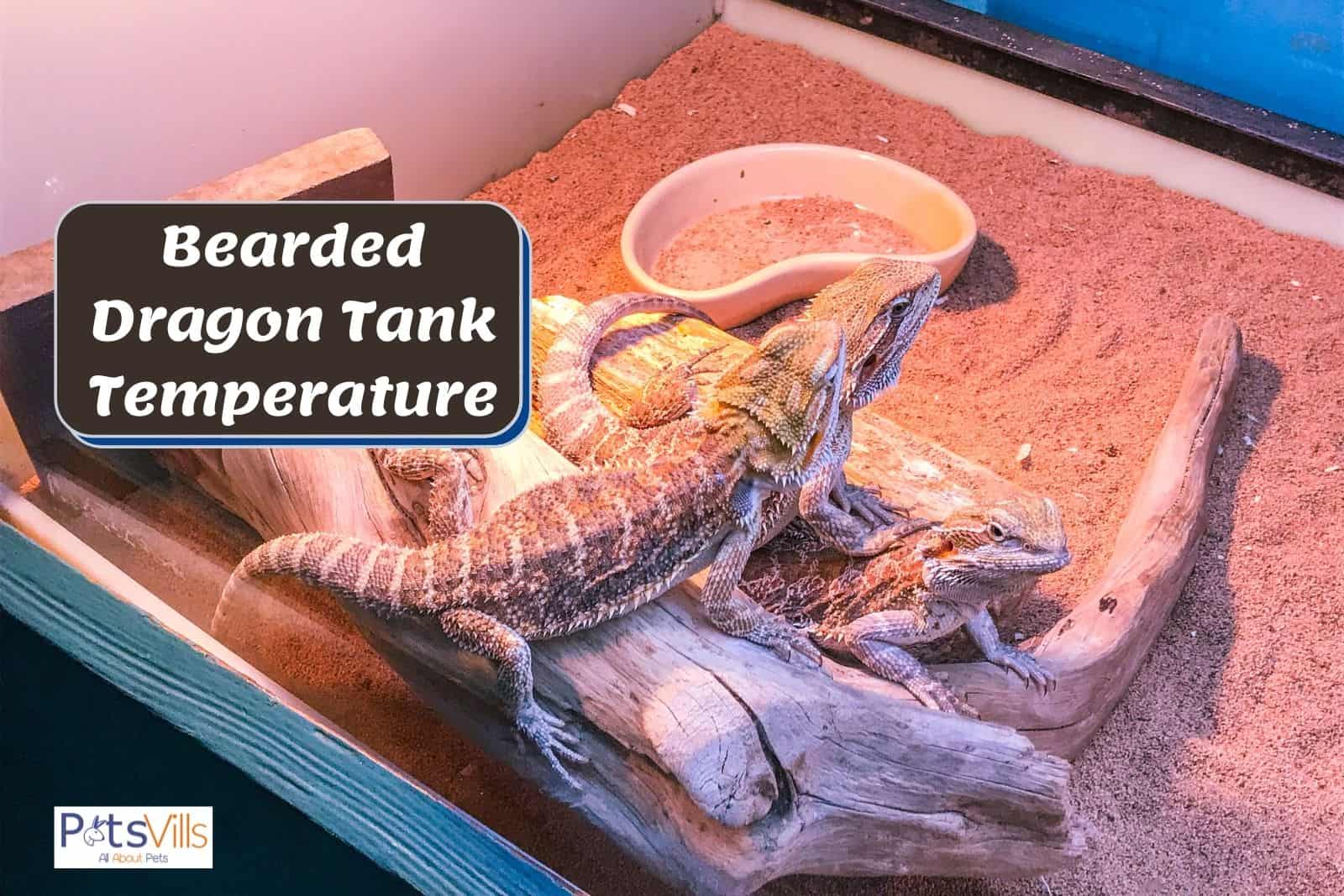Any pet parents ask, “what temperature should a bearded dragon tank be”?
Does it change when they age?
If you have those questions on your plate, then fret no more because that’s what I’ll be discussing fully and entirely in this guide!
Here’s a quick video summary:
Table of Contents
Table of Contents
What Temperature Should a Bearded Dragon Tank Be? (Per Age Group)
The proper temperature for a bearded dragon varies by age!
Yes, even in my experience, never have I thought that the age of a beardie would matter in this formula.
Before discussing the optimal temperature for each milestone or age of your bearded dragons, I would like you to watch this video!
It will help you understand the importance of bright light and heat in an enclosure.
Knowing the correct temperatures is relevant as it’s a factor that helps your beardies become healthier and align their active body temperatures.
Here’s a quick summary of the ideal temperatures:
| Age | Ideal Tank Temperature |
|---|---|
| Baby Bearded Dragon | 35 to 43 °C (95 to 110 °F) |
| Juvenile Bearded Dragon | 35 to 40 °C (95 to 105 °F) |
| Adult Bearded Dragon | Daytime: 25 to 29 °C (75 to 85 °F) Nighttime: 21 to 24 °C (70 to 75 °F) |
1. Best Tank Temperature for a Baby Bearded Dragon
The ideal, or best bearded dragon enclosure temp for baby beardies of hatchlings would be about 35 to 43 °C (95 to 110 °F).
This specific temperature range is vital for their well-being and development. In captivity, unlike their natural habitat in the wild, these young lizards rely entirely on their controlled environment to mimic natural conditions.
Ensuring the right temperature is essential, as it directly impacts their ability to absorb the necessary nutrients and minerals that they would typically derive from their natural outdoor habitat. Maintaining this temperature range is a key aspect of providing a healthy and nurturing environment for your baby bearded dragon.
EXPERT TIP: The cool spot area in baby bearded dragon cages or tanks should be about 24 to 27 °C (75 to 80 °F). [1]
2. Best Enclosure Temperature for A Juvenile Bearded Dragon
The appropriate temperature range for juvenile bearded dragons closely mirrors that recommended for baby beardies. When considering the ideal thermal environment for a juvenile bearded dragon’s tank, what temperature should be maintained? The similar level of warmth that supports the growth and health of baby beardies is also conducive to the well-being of juveniles. The consistent temperature range is crucial in ensuring a suitable and comfortable habitat that promotes their healthy development during this transitional growth phase.
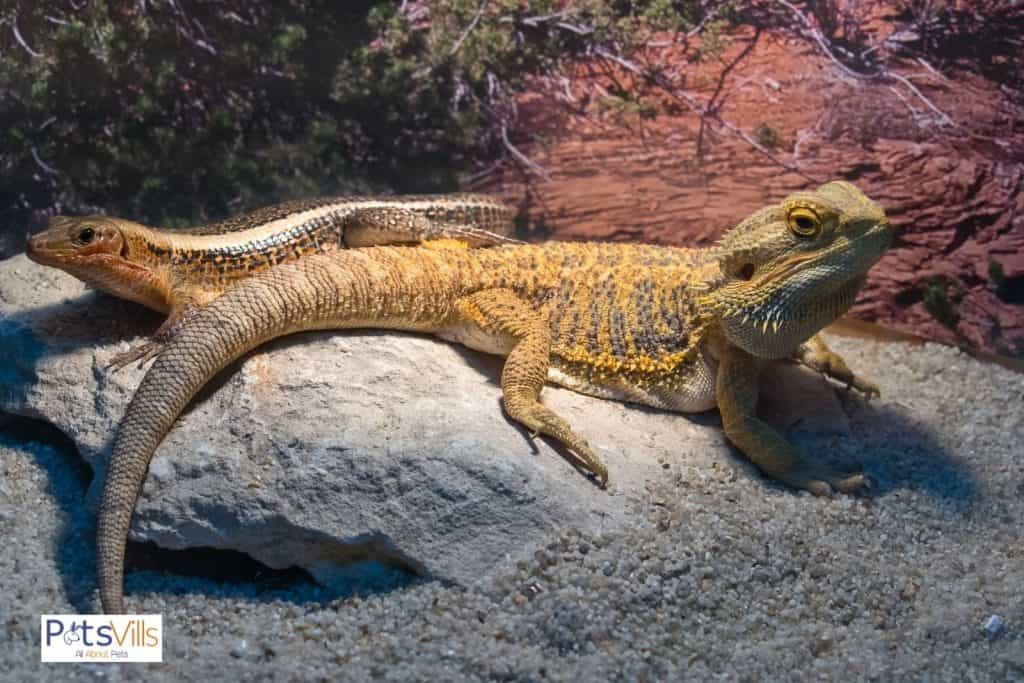
The basking temperature should be about 35 to 40 °C (95 to 105 °F), while the cool spot must revolve around 24 to 27 °C (75 to 80 °F).
#3 Best Cage Temperature for an Adult Bearded Dragon
For fully mature adult bearded dragons, a more sophisticated temperature gradient is essential within their enclosure. This complexity in temperature variation is necessary to accommodate their regular activities and behaviors within the tank.
Adult dragons engage in a range of activities and thus require different temperature zones to simulate their natural habitat more closely, supporting their overall health and well-being.
Daytime and nighttime temperatures should be about 25 to 29 °C (75 to 85 °F) and 21 to 24 °C (70 to 75 °F) respectively.
Maintain the cooler spot of the ambient temperature at 21 °C (70 °F).
EXPERT TIP: Play with the basking spot around 31 to 37 °C (88 to 100 °F). I set mine to be at a steady rate of 33 to 35 °C.
So, these are the recommended range of temperatures in your glass tanks, depending on how old your beardies are.
As a personal tip, NEVER forget to have a cool spot anywhere within the tank. To do this, ensure that you have a temperature gradient within the tank to promote balance.
QUICK TIP: You can use a digital thermometer to check the proper temperature gradient in bearded dragon tanks. Make sure that you place it on both ends to get accurate temperature readings.
CHECK: Lowest Temperature Bearded Dragon Can Survive
What to Consider When Setting the Temp of Your Bearded Dragon Tanks
When setting the ideal temperature of your bearded dragon enclosure, it’ll be best to consider the day and night temperature, the placement within the household, the use of the heat lamp, and a lot more!
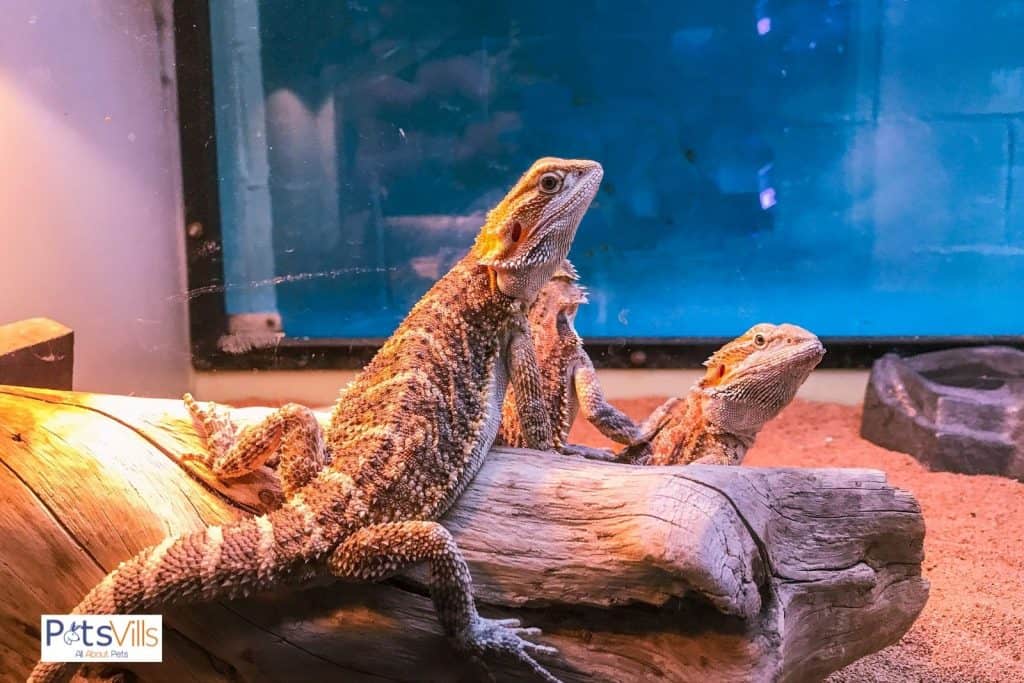
I made this guide easy and simple to understand, so you don’t need any other guide!
#1 Knowing the Correct Nighttime and Daytime Temperatures
Because of their nature, the best daytime temperatures for beardies should play around 24 to 29 °C or 75 to 85 °F; nighttime should never fall below 19 °C (66 °F).
FUN FACT: Wild beardies strive in deserts, and deserts emit killer cold temperatures at night. So, don’t worry about it getting too cold; just don’t let the night temperature fall below 16 °C (61 °F).
Aa vet, having a bearded dragon, during regular days, I have my light bulb turned off during nighttime. But, during winter, I keep it on. I also use heat without light, making it a win-win for me and my pet reptile.
Wondering when it’s best to turn off your bearded dragon’s lights? Check out our article ‘What Time Should I Turn My Bearded Dragon’s Light Off at Night‘ for expert advice!
#2 Necessary Bearded Dragon Basking Spot Temperature
The basking temperature will be slightly higher than the daytime –at about 35 °C (95 °F). In other words, this area is supposed to be the hottest part of your beardie’s enclosure.
It’s a vital part of keeping them comfortable and relaxed. After all, your beardie will use this basking area to absorb UVB light and heat from its UVB bulb.
QUICK TIP: Basking spots use a heat lamp and UV basking bulb. I’d recommend using a mercury vapor bulb to get all the needed light from one source.
But it’s crucial to avoid keeping these bulbs all night. Instead, it should be left on during the day only while being turned off while you’re sleeping.
Meanwhile, some bearded dragon owners suggest leaving a different colored light on at night. But I’d advise against ensuring your beardie stays on a steady routine.
If you’re forgetful, I’d advise using a timer switch on this light. It’ll help prevent you from forgetting to turn it on once you wake up.
#3 Understanding the Placement of the Tank Within the House
Even if you are prepared with UV or UVB light for bearded dragon enclosures, you must place your glass terrariums in an area where the temperature can be controlled.
Most glass terrariums placed inside the house should be far from the windows to avoid stressing your beardie out. I remember mine near my bedside table to easily see through my beardie’s enclosure.
If your house tends to heat up, you need to know how to lower bearded dragon humidity to keep the humidity level fair.
#4 Monitoring and Assessing the Tank Temperature
Lastly, you need to perform constant monitoring of the ambient temperature.
Not all tanks hold temperature accurately, so track the bearded dragon’s cold and hot spots regularly using a digital probe thermometer.
Check our list of the best bearded dragon thermometer.
QUICK NOTE: If your UV light has a digital interface, check it constantly. You want to keep the heat gradient consistent throughout the tank.
#5 Considering the Size of Bearded Dragon Tanks
The recommended size of a tank is about four (4) to five (5) times larger than the beardie would be because of the cold and hot spot temperature.
You want a gradient of temperatures for regular activities, hotter temperatures for basking, and cooler temperatures for cooling.
What Temperatures Are “Tolerable” For Bearded Dragons?
Although most bearded dragons would be able to live just fine within the 18 to 20 °C (64 to 68 °F), do whatever you can to refrain from it.
At first, I thought I was getting in the “danger zone” as I adopted my beardie during winter. As it turns out, it’s fine when the temperatures drop to 18 °C at night, so long as there’s a heat lamp.
By now, you should know that your beardie hates a colder temperature, and that’s where the importance of a heat lamp, UVB lights, heat tapes, [2] hand warmers, and other heaters come in.
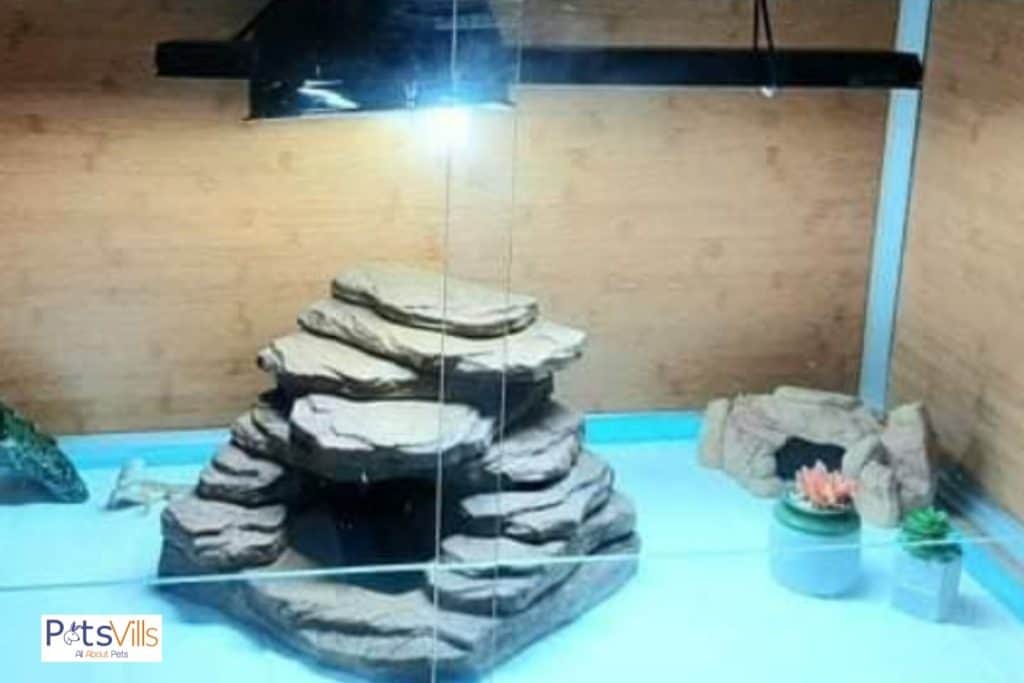
If power is out, try using any means possible to make and keep your pet reptiles warm. Use any of the following to complement your bearded dragon tanks:
- Use Heat Tapes.
- Throw In Hand Warmers.
- Make Use of Portable Heaters.
- Cuddle With Your Beardie.
#1 Why Do Bearded Dragons Need Their Tanks So Warm?
Bearded dragons need their tanks at such warm temperatures for a simple reason. Owners must get these enclosures to mimic the natural environment as much as possible.
In the case of bearded dragons, their natural environment is the Australian desert. So it must be a very warm enclosure to help them thrive and remain healthy.
As a result, they will need high temperatures during the day and cooler ones at night. It’s the only way to ensure their tanks meet their needs.
After all, beardies are known for being cold-blooded, so owners can’t expect them to get heat by themselves. You need to provide it via an external source so they can absorb it.
If you don’t, it could cause various health issues. Some include inducing high stress, digestive problems, and even death.
Given this information, let’s do our best to build their enclosures correctly. It’s our job to provide them with the right conditions to live their best lives.
#2 How cold is too cold for a Bearded dragon?
The lowest temperatures a beardie can handle will change throughout the day. It stems from their need to absorb heat as they can’t create themselves.
So the lowest possible temperature is a brisk 21°C (70°F) when it’s daytime. Anything lower will be too cold for them to remain in good shape.
I should also note that these lower temperatures should never affect the basking area. It must always stay at about 35 °C (95 °F) during the day.
As for nighttime, beardies can be comfortable in temperatures down to 16°C (61°F). It provides you with more range to compensate for overnight temperature drops.
If you feel like you still lack knowledge, here are a few of the most asked questions relating to the required ambient temperature of your beardies.
FAQs
Is 80 Degrees Too Cold For a Bearded Dragon?
80 °F or 27 °C is the right temperature for a cool spot inside bearded dragon tanks. This temperature is just right for your beardie to cool down during cage time.
Where to Put Thermometer In a Bearded Dragon Tank?
The best location to place a digital probe thermometer inside bearded dragon tanks would be near the floor for both ends (cool spot and hot spot) for accurate temperature readings.
How Do I Make My Bearded Dragon Tank Hotter?
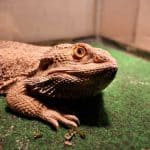
You can make your bearded dragon tanks hotter by using a few materials, such as:
– Ceramic Heat Emitters.
– Heat Mats.
– Other Safe Heat Sources.
I recommend using ceramic heating elements for a more controlled and less troublesome experience.
Can it Get Too Hot For Bearded Dragons?
Yes, your beardies can feel when the temperature is a little over their limits. Some of the common signs that the temperature is more than what it should be and that your beardie is overheated include:
– Digging.
– Hiding.
– Sitting in a corner for long periods of time.
In Conclusion,
If you’re confused and ask what temperature a bearded dragon cage should be, you have all the guidance you need!
Unlike me, who had to go through all the mistakes, you can go back to this guide the next time you get confused about giving your pet reptiles the optimal temperature they should get.
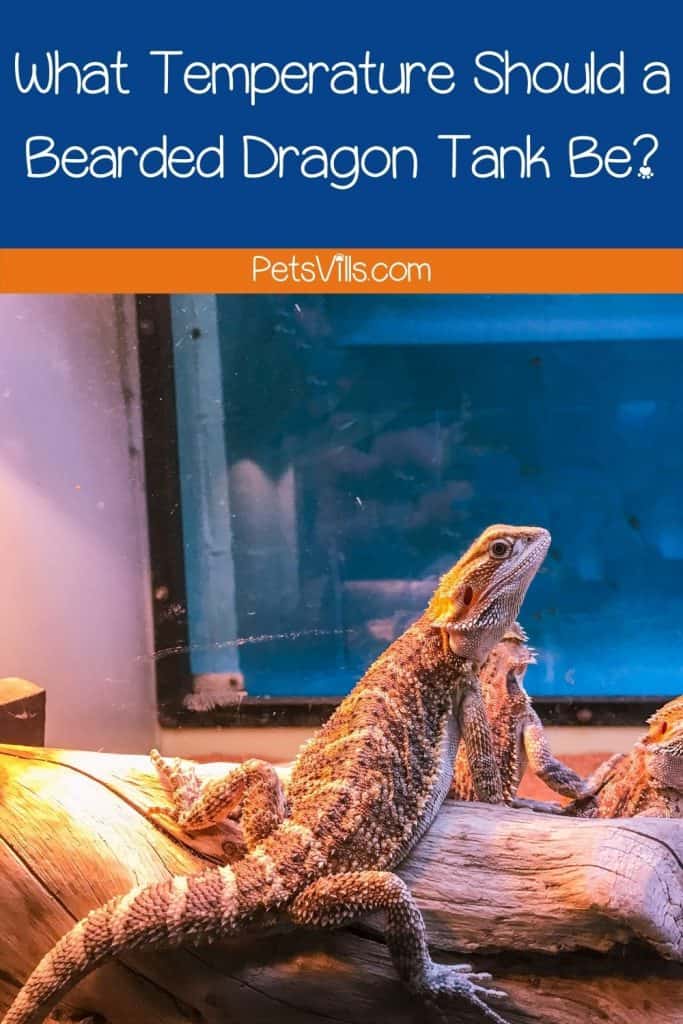
What bearded dragon tank temperature do you use? Let us know below!
References
- 1. Bearded Dragons – Housing [Internet]. vca_corporate. Available from: https://vcahospitals.com/know-your-pet/bearded-dragons-housing
- 2. Caring for Your Pet Bearded Dragon [Internet]. Available from: https://cvm.ncsu.edu/wp-content/uploads/2016/12/Caring-for-your-Bearded-Dragon.pdf
Dr. Linda Simon MVB MRCVS is a locum veterinary surgeon who has worked in London for the past 8 years. She graduated top of her class in small animal medicine from UCD, Dublin. She is currently a member of the Royal College of Veterinary Surgeons.
Linda is the resident vet for Woman magazine and a frequent contributor to People’s Friend Magazine, the Dogzone website, Vet Help Direct and Wag! Linda also writes content for the CVS veterinary group, Vetwriter and a number of other establishments.
As well as working in clinic, Linda is an online vet for www. JustAnswer.com where she has been providing online advice for thousands of owners since 2018.
In her spare time, Linda enjoys baking, yoga and running around after her young son!
FIND HER ON: INSTAGRAM

